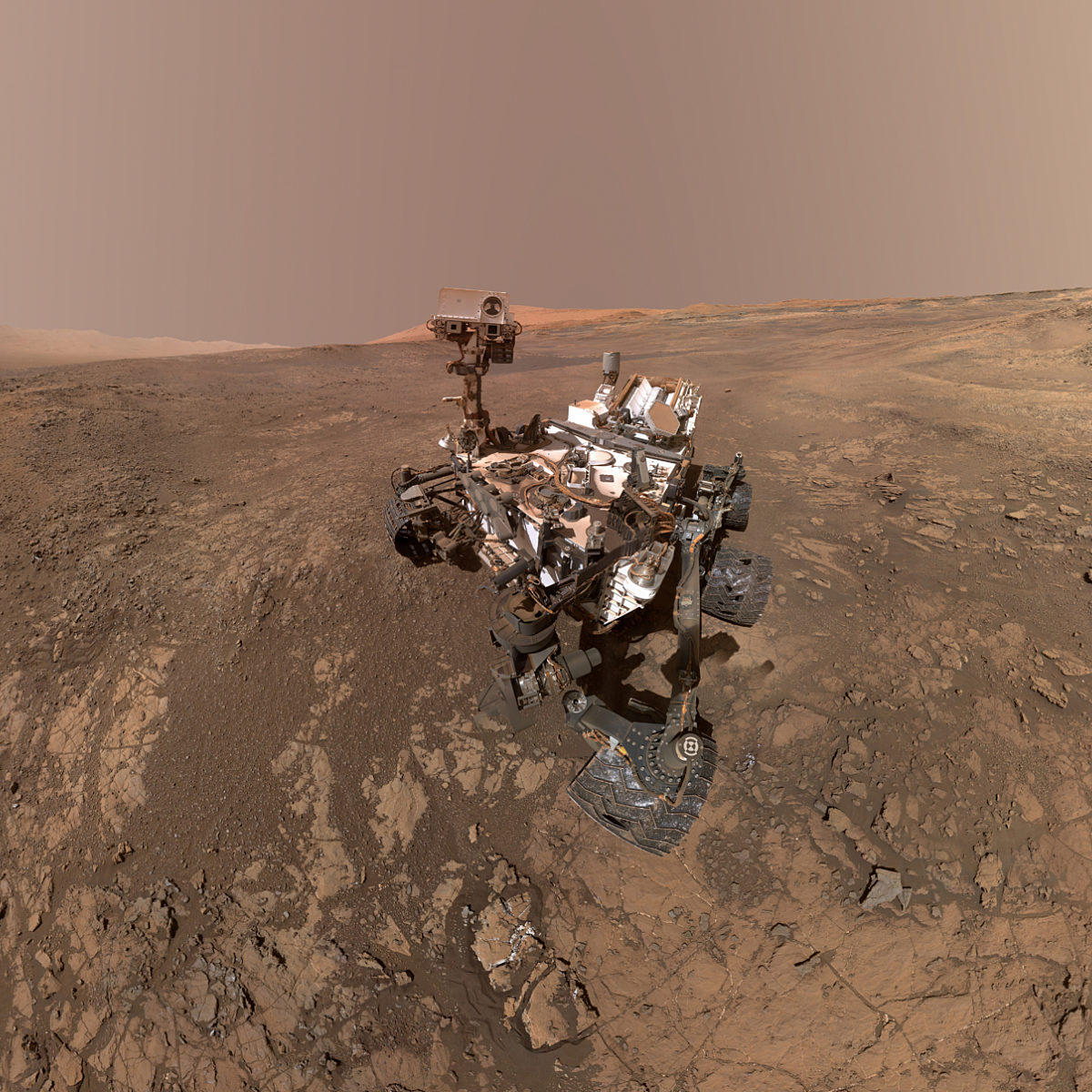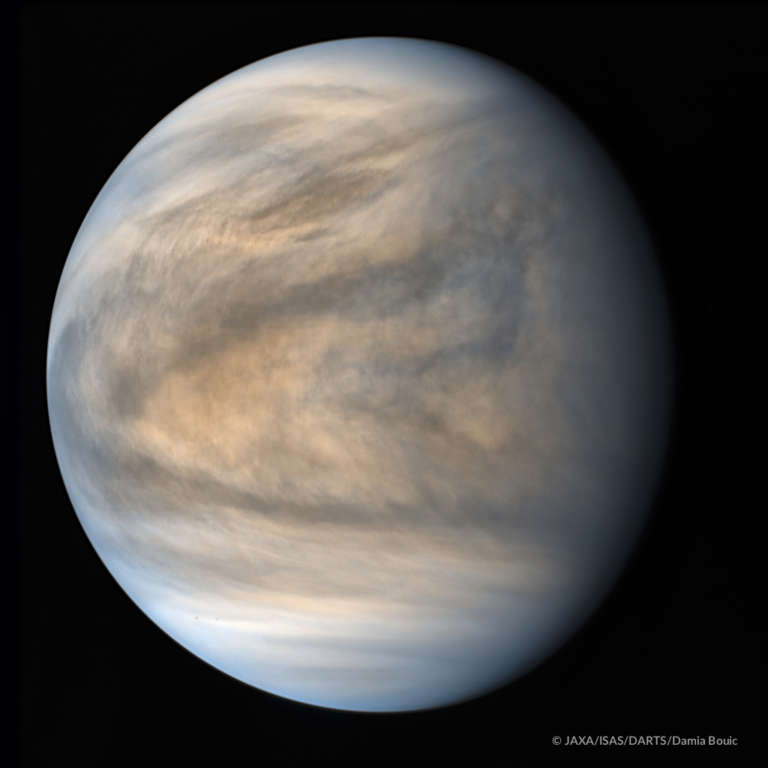All
All
Stories, updates, insights, and original analysis from The Planetary Society.
Go for GOLD, SES-14!
While we can measure properties of these upper layers using ground-based instruments, satellite-borne remote sensing instruments can give us a more frequent, global, and often higher spatial resolution perspective. And that is precisely what NASA’s Global-scale Observations of the Limb and Disk (GOLD) mission will deliver.
Curiosity update, sols 1927-1971: Ready to resume drilling
After a hiatus of nearly 500 sols, Curiosity is ready to attempt drilling into a Mars rock again.
Opportunity's sol 5000 self-portrait
Last week the Mars Exploration Rover Opportunity celebrated its 5000th sol on Mars, and it celebrated by taking the first complete Mars Exploration Rover self-portrait.
Simulating Mars in the Middle East
The Austrian Space Forum is leading a four-week Mars mission in Oman's Dhofar Desert.
Maintaining the health of an aging Mars orbiter
NASA has announced changes to how engineers are operating Mars Reconnaissance Orbiter in order to prolong its life as long as possible, long enough to support the Mars 2020 rover mission.
How the Falcon Heavy could revolutionize exploration of the ocean worlds
SpaceX's Falcon Heavy is not just for big payloads, it can also throw light things into space very fast. And that has significant implications for the exploration of distant destinations in our outer solar system—particularly the ocean moons of the giant planets.
The Mars Exploration Rovers Update: Mission Completes 14 Years of Exploring, Opportunity Roves into Year 15!
In January, Opportunity quietly completed 14 years of surface operations on Mars—the longest-lived robot on another planet.
Some big moons in the Kuiper belt
In a new preprint, Mike Brown and Bryan Butler show evidence that two Kuiper belt moons are even bigger than we used to think. They are Eris' moon Dysnomia, and Orcus' moon Vanth.
International meetings: Moon initiatives
Interest is rising globally in expanded lunar science, resource exploration and eventually permanent human settlement. Also, the potential for commercial lunar enterprises is being seriously examined.
Creating a guidebook for Earth's hypothetical twin
Early Earth's atmosphere wasn't a place for humans. Yet the planet had microbial life—something we should keep in mind for exoplanets.
New Horizons prepares for encounter with 2014 MU69
Throughout 2018, New Horizons will cruise toward its January 1 encounter with 2014 MU69. Preparations for the flyby are nearly complete.
Dawn Journal: 4 Billion Miles
Permanently in residence at dwarf planet Ceres, Dawn is now preparing to add some finishing touches to its mission.
A new look at Venus with Akatsuki
Amateur image processor Damia Bouic shares a plethora of stunning new images of Venus captured by a Japanese spacecraft.
HiRISE image coverage of the Curiosity field site on Mars, Version 4.0
The latest and greatest update of Emily's list of all the Mars Reconnaissance Orbiter HiRISE images that contain Curiosity hardware, tracks, or traverses.
No plumes? No problem. How Europa Clipper will analyze an icy moon's ocean
Europa doesn't have grandiose plumes like Enceladus. So how will the Clipper mission figure out what's in Europa's ocean?
Curiosity update, sols 1814-1926: Vera Rubin Ridge Walkabout
Curiosity is climbing across the top of Vera Rubin Ridge, spying varicolored rocks. It's getting closer to being ready to drill again, and has performed a wet chemistry experiment for the first time.
The Mars Exploration Rovers Update: Opportunity Beats Winter, Wraps 2017, and Heads for 14th Anniversary
With the Martian winter on the run, Opportunity cruised closer to its 14th anniversary of exploring the Red Planet in December as she deliberated a distinctive “fork in the road” deep in Perseverance Valley and wrapped another record year.
What changed with space directive #1?
President Trump signed Space Directive #1, formally implementing as policy what Vice President Pence had announced at the first meeting of the National Space Council in October: that NASA will focus its human spaceflight efforts on a return to the Moon, and then onto Mars. What really changed?
Mastcam-Z team blog: Landing sites
It takes years to decide where a Mars rover is going to land. Members of NASA's Mars 2020's camera team describe their participation in the process.
Pretty Pictures of the Cosmos: Snapshots of Chaos
Award-winning astrophotographer Adam Block brings us stunning images of beautifully chaotic scenes across the universe.


 Explore Worlds
Explore Worlds Find Life
Find Life Defend Earth
Defend Earth


 Sun
Sun Mercury
Mercury Venus
Venus Earth
Earth Mars
Mars Jupiter
Jupiter Saturn
Saturn Uranus
Uranus Neptune
Neptune Small Bodies
Small Bodies


















